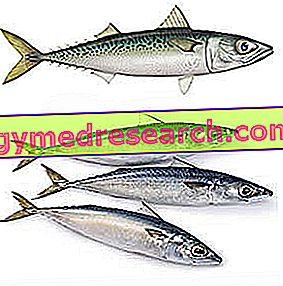Description and habitat
The lanzardo, or Scomber japonicus, is a "blue" fish of pelagic (or migratory) nature that feeds on small fish; it has a strong resemblance to the mackerel ( Scomber scombrus ) and both are part of the Sgombridi family.

Being pelagic, the lanzardo is a seasonal availability fish and in summer (like many other species) it approaches the coasts to optimize its reproductive cycle. Like the other Sgombridi, the lanzardo constitutes a fish variety characteristic of fishing in the Mediterranean sea, and having the possibility of exploiting the so-called short chain, its retail cost is generally among the lowest on the bank.
Characteristics of the meat
The lanzardo, like the mackerel, is one of the most consumed blue fish; its meat is tender and not very thorny, characterized by a high lipid content (of which about 26% omega3) which enhances its softness but at the same time weighs heavily on the qualitative difference of the frozen product (which loses consistency and palatability) compared to the one just caught. It can be eaten both fresh and preserved (in oil, in brine, frozen) and the most suitable method of cooking for lanzardo is undoubtedly the roasting on the "living embers of the wood".
Nutritional values
One hundred grams of edible portion
| Power | 173, 00kcal |
| Protein | 19, 00g |
| Lipids | 10, 50g |
| of which omega 3 | 2, 70g |
| carbohydrates | 0, 74g |
| Iron | 0, 9mg |
| Football | 8, 00mg |
| Thiamine (B1) | 15 microg |
| Retinol (vit A) | 0.01 microg |
| Ascorbic acid (vit C) | 2 microg |
| Calciferol (vit D) | 0.07 microg |
The lanzardo is a fish which is recommended to increase consumption; from a hygienic point of view, it is advisable to follow the hygiene rules against anisakis contamination, because even lanzardo (like most of the blue fish) has a high probability of parasitosis. Furthermore, we recall that the lanzardo represents about the penultimate ring of the food chain, therefore, its meat could include a certain amount of mercury; to date, in humans there are still no cancers whose causes were due to the accumulation of fish mercury; however, it would still be advisable to limit the consumption of large specimens to no more than 4-5 weekly portions.



